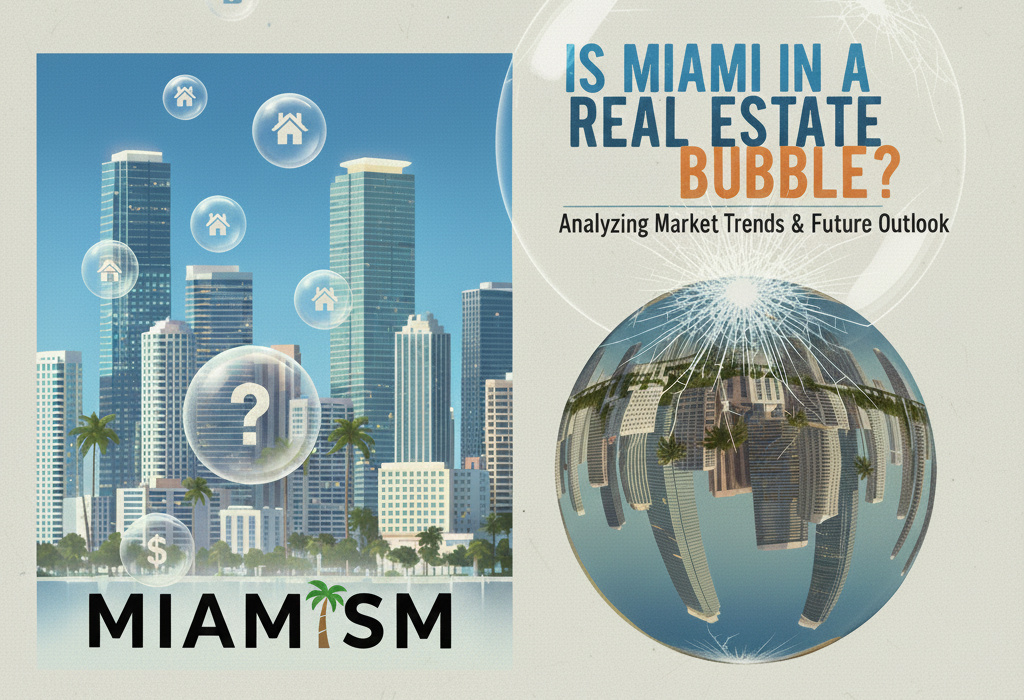
Is Miami in a Real Estate Bubble?
Short Answer: No, Miami Is Not in a Real Estate Bubble
A real estate bubble forms when home prices are artificially inflated by speculation and easy credit, only to crash when the market corrects. In 2007, Miami was a textbook example. Today, it’s a different story.
The Miami housing market in 2025 is being shaped by real demand, not risky debt. Homebuyers aren’t chasing quick flips; they’re relocating, investing long-term, and paying cash. The fundamentals behind this market are strong.
What the Data Tells Us About Miami’s Housing Market
Let’s break it down:
-
Over 70% of high-end condo sales are all-cash. This isn’t debt-fueled buying; it’s liquidity.
-
Tight lending standards are in place. Gone are the days of no-doc loans and subprime chaos.
-
Inventory remains low. There’s no surplus flooding the market. Supply and demand remain in balance.
-
Price growth has cooled but hasn’t collapsed. The frenzy has faded, but pricing is holding steady.
-
Demand is lifestyle- and migration-driven. Buyers are moving here for work, lifestyle, and tax benefits, not just investment returns.
This is not a frothy, overleveraged market. It’s a maturing one.
Why the “Bubble” Talk Misses the Point
Global reports like the UBS Real Estate Bubble Index label Miami a risk based on income-to-price ratios. But that assumes all buyers earn local wages, which simply isn’t the case. Many buyers are relocating from markets like New York, San Francisco, and overseas, bringing higher income, capital, and different expectations.
The result? Yes, Miami is expensive. But it’s not irrational. And it’s not set up for a crash.
Yes, Affordability Is a Real Concern
This doesn’t mean everything’s fine.
Housing affordability for locals is a major challenge. Many Miami residents are being priced out of the communities they’ve lived in for years. Teachers, nurses, service workers, and first responders are being pushed further from the urban core, creating workforce shortages and commuter strain.
But this is not a bubble problem. It’s a supply and income problem. Fixing it requires policy, planning, and investment, not fear-driven headlines.
This Market Isn’t Fragile. It’s Evolving.
We’re moving from an overheated seller’s market to a more stable and balanced one. That’s not collapse. That’s sustainability.
Miami’s real estate market in 2025 is being shaped by global migration, economic opportunity, and cash-backed confidence. The crash narrative doesn’t hold water here.
Miami Housing Market 2025 – FAQ
Is Miami real estate in a bubble in 2025?
No. Home prices are supported by cash buyers, strict lending, and strong demand.
Will Miami home prices crash?
No crash indicators are present. Prices are stable, not falling sharply.
Why is Miami housing so expensive?
Limited supply, high construction costs, and buyers relocating from higher-cost markets.
Is housing in Miami still unaffordable for locals?
Yes. Affordability is a challenge, but it’s tied to income gaps and limited housing, not speculation.
What’s different from 2007?
No subprime loans. No oversupply. No flipping frenzy. This market has real equity behind it.
Should I wait to buy a home in Miami?
If you’re buying long-term and the right opportunity comes up, no data is suggesting a better window is around the corner.
Final Thought: Let’s Cut Through the Noise
Don’t let national headlines define a hyperlocal story. Miami isn’t in a bubble. It’s in a reset. And at Miamism, we’ll keep bringing you the facts, not the fear.
If you’re tired of the hype and want real answers, we’re here for it. Whether you’re buying, selling, or just watching the market evolve, we break it down without the noise.
→ Reach out for a no-fluff market breakdown tailored to your neighborhood.
Smart decisions start with local insight. That’s what we do.
